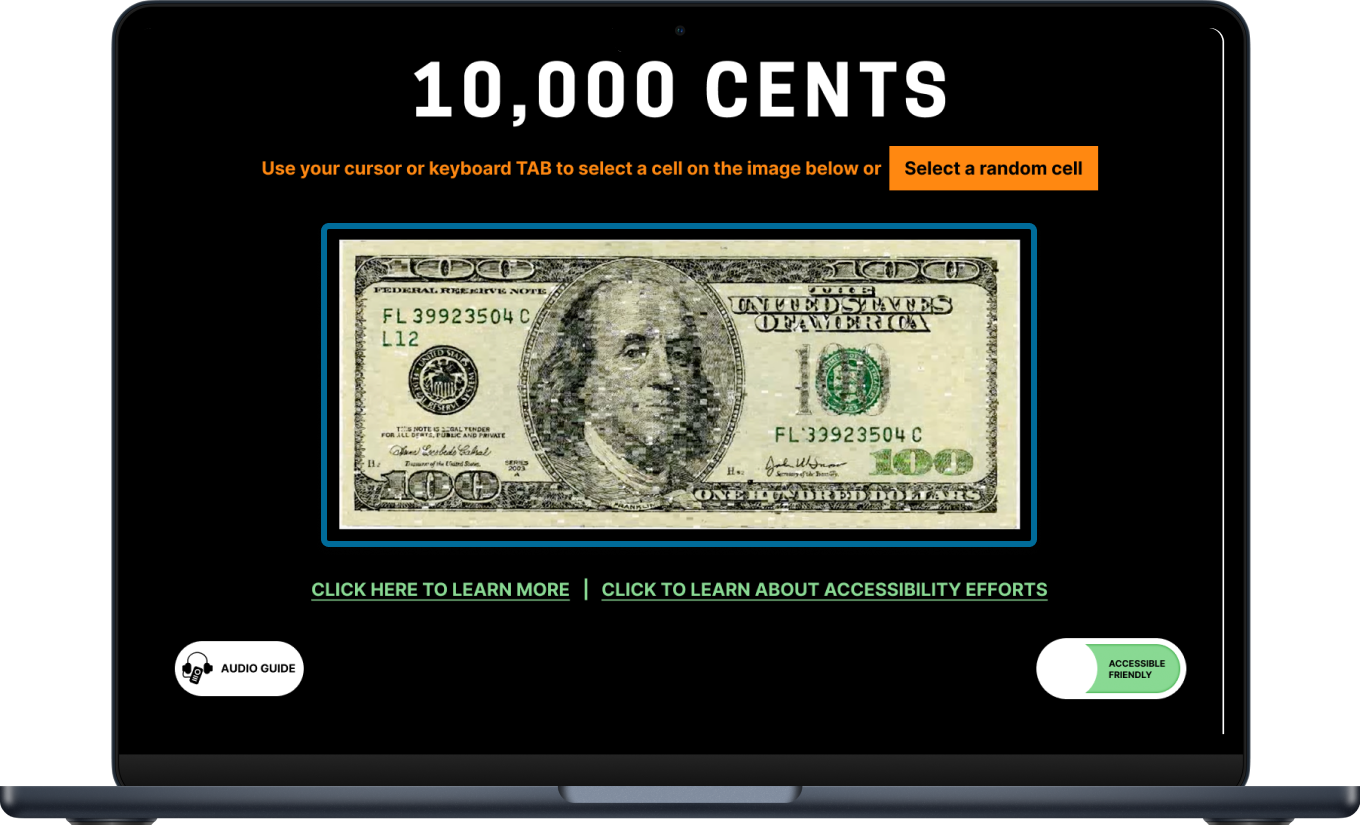goal
Audit the 10,000 Cents exhibit for accessibility and redesign it to make the piece fully accessible for visitors with visual needs while maintaining its original artistic integrity.
client
Cooper Hewitt
DX Center @ Pratt
tools
Figma
Accessibility audit and re-design
Audit the 10,000 Cents exhibit for accessibility and redesign it to make the piece fully accessible for visitors with visual needs while maintaining its original artistic integrity.
Cooper Hewitt
DX Center @ Pratt
Figma
Lack of text alternatives for each image in the project
Programmatically unclear purpose for image ‘cells’
Small Cursor Size. Less than the recommended 24 by 24 pixel size
Red cursor selector on green background. Inaccessible for red-green colorblind users.

Screen reader–friendly structure for titles and navigation

Accessible randomizer cursor designed for seamless non-visual interaction and enhanced screen reader support

Turning visual information into sound for accessible, inclusive experiences.

Provides built-in information to give users clear context and accessibility guidance.

Brings artwork to life by translating visual elements into engaging sound experiences.

Allows users to seamlessly toggle between accessible and original layouts for a flexible, inclusive experience.

Enables users, particularly those with visual impairments, to explore the project with the same sense of curiosity as a fully visual experience by randomly selecting cells instead of manually choosing them.


Adding tab indices to the project’s HTML enhances keyboard navigation, ensuring compliance with WCAG 2.1, ADA Title III, and Section 508. It provides users with a more accessible and flexible way to interact with the content.




This project was well received by the Cooper Hewitt team, who appreciated our accessible, thoughtful reinterpretation of the original work. Although our goal was to make 10,000 Cents accessible, the Cooper Hewitt team was especially excited by our multi-sensory approach, which invited visitors of all abilities to engage with the piece in inclusive, interactive ways.
There is still room to grow:
How might blind and deaf users engage even more fully?
How can we broaden alt text and narration to support more languages?
These are meaningful opportunities for the Cooper Hewitt—or future teams—to build on and make the exhibit even more inclusive.